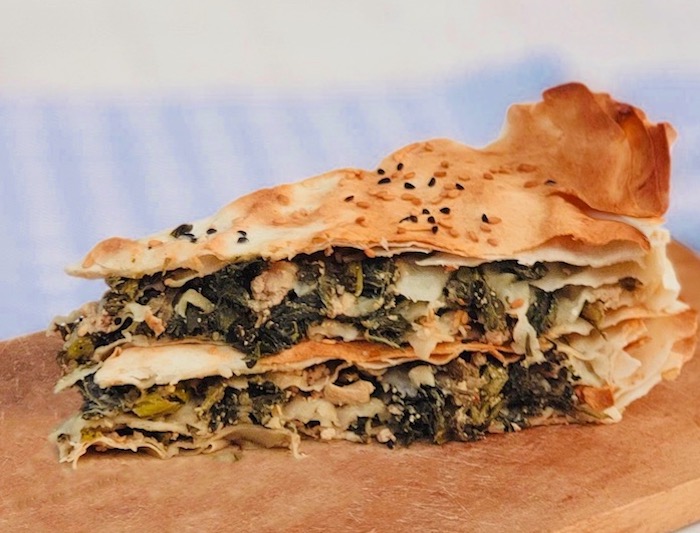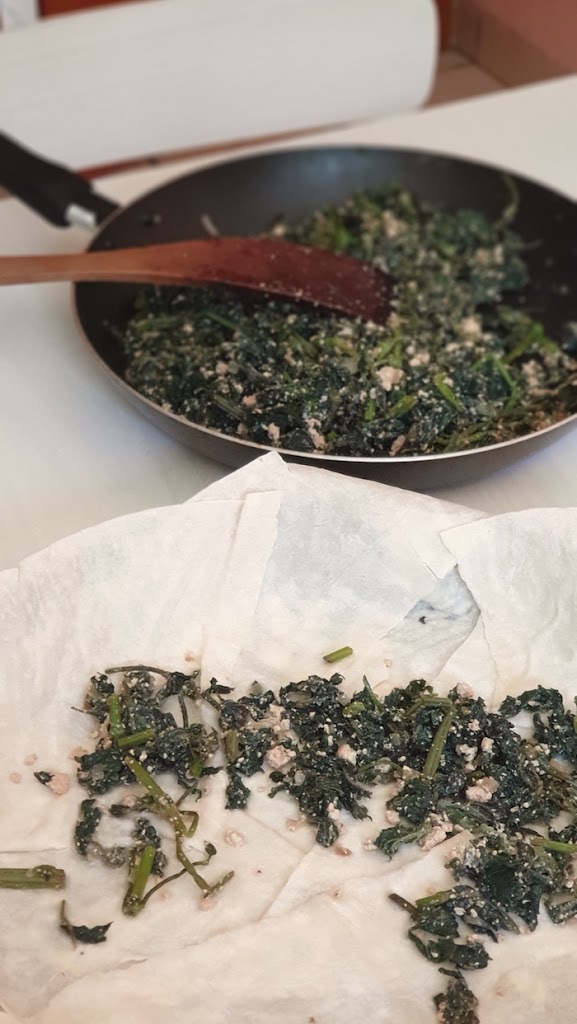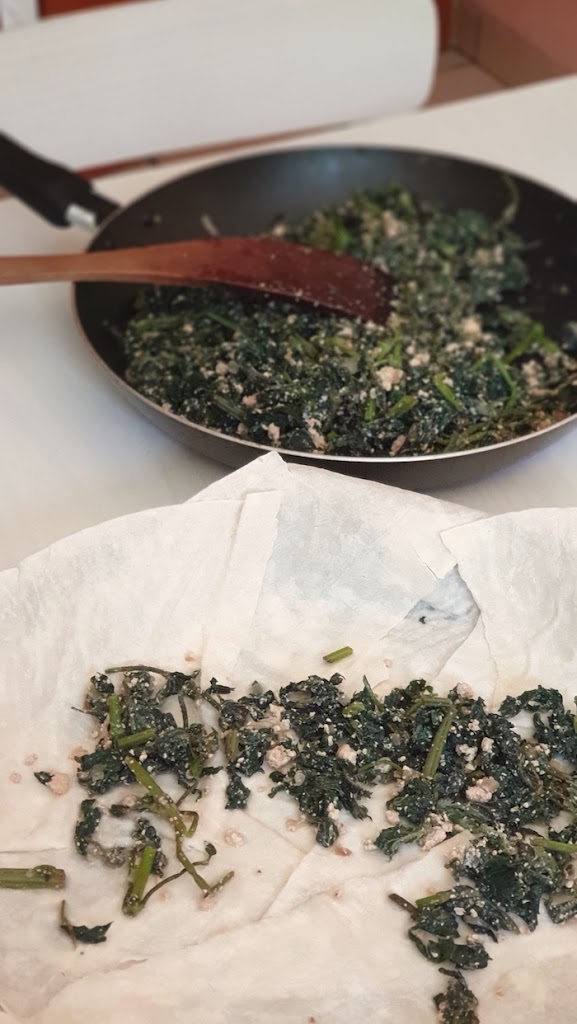Nettle borek
Aaaah nettles! What would I do without you? Stinging nettles (Urtica dioica) are actually one of my favourite plants and I very often drink them as tea. It is known they have many medicinal uses, from reducing inflammation to lowering blood cholesterol and even treating cancer but mainly, they’re just really rich in minerals like calcium, iron, magnesium and other nutrients like vitamin C, carotenoids and flavonoids. They’ve been used for centuries to cure ailments but they’ve also been eaten as a leaf vegetable for just as long. Everybody has heard of nettle soup, right?
I do find the soup quite boring to be completely honest but luckily there are countless ways to cook nettles. Anything you can do with spinach, you can do with nettles. If you wonder what they taste like, I would say mild spinach but a bit peppery and sometimes even a little bit like seaweed. There’s only one way to find out. Try it!
Today, I’ve decided to make a vegan Turkish style borek… or spanakopita if you prefer, but since spanaki means spinach, we can’t really call it that. Either way, don’t worry, it won’t sting and it will taste good!
First things first, we need to talk about how to harvest the nettles. You will obviously need gloves (kitchen or gardening will do) but it’s even better if you wear long sleeves and cover your legs too. Better safe than sorry. Now that you’re all geared up, go to your nettle patch and cut the top parts. They are more tender and will taste better. Watch out for eggs under the leaves and caterpillars though! Many butterflies use nettles as breeding grounds so just leave those parts alone. Once you’ve got what you need, it’s time to get rid of those stingers.
Nettles sting because they have small hollow hairs than contain formic acid and histamine but luckily, it’s easy to get rid of them. Once you’ve washed the nettles (still with gloves) you simply have to blanch them for a few seconds. The boiling water will remove the stinging cells. We can finally make that borek!
Ingredients:
– Turkish pastry leaves or Phyllo dough (about 400g)
– 400g nettles (blanched and chopped)
– 100g fermented tofu
– 1 onion (chopped)
– salt, pepper to taste
– olive oil (the more the better)
– water
– black cumin and sesame seeds (optional)
Instructions:
In a large pan, sauté the onion in some olive oil. Add the chopped nettles, salt and pepper and cook until completely soft. Crumble the fermented tofu and add to the mixture. Set aside. Pour some oil in a round pie or cake pan and line the bottom with several pastry sheets. Pour some of the nettle-tofu mixture over and cover with another pastry sheet. Brush with some water and make another nettle-tofu layer. Repeat until the pan is full. Fold the bottom sheets over and cover with one last sheet. Tuck the edges in and brush with oil. Sprinkle with sesame seeds and black cumin. Bake at 180°C for 30 minutes or until golden.




